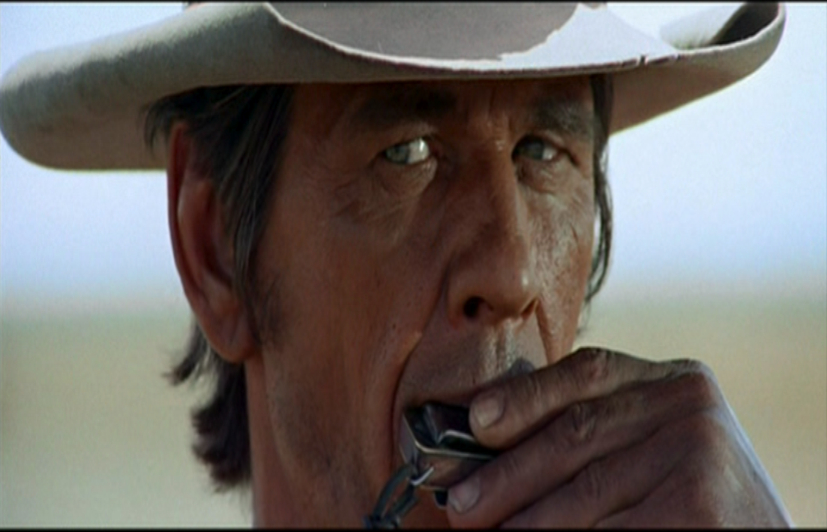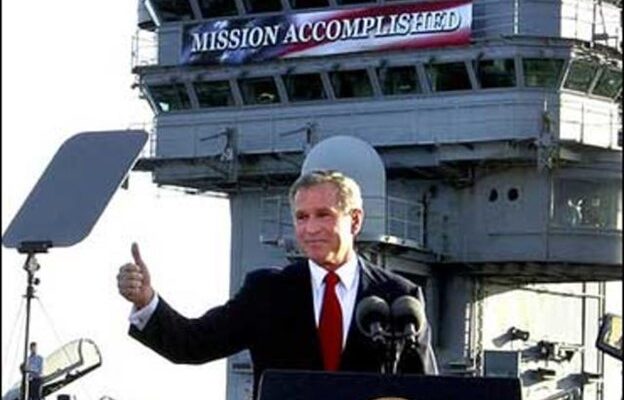Since most of my life has been marked by the post-Cold War era, and with that the end of the unifying force that was able to bind several desperate strains of thought into a single ideology, most of my life has been marked by the so-called “conservative civil war.” Back during the Cold War, hatred of communism, a common enemy, was able to unite various strains of conservativism that would have never been able to come together in almost any other circumstance. Catholic traditionalists and low church evangelicals, Southern agrarians and New England patricians, protectionists and libertarians, populists and the Chamber of Commerce – all came together under the banner of conservatism to defeat communism as represented by the Soviet Union.
But when the Soviet Union collapsed, that unifying force ended, almost immediately, and the various factions began to fight with each other, each claiming to represent the true nature of conservatism. In fairness, there had long been fights on the fringes. For example, Murray Rothbard and Karl Hess rebelled against the warfare state and L. Brent Bozell eventually came to see American corporatism as a threat to Christianity (on the same level as the Soviet Union). One could also look at the conflict between Mel Bradford and William Bennett over who would be Reagan’s pick to lead the National Endowment for the Humanities (NEH).
But still, those were fights along the peripheries. The real conflict would only come after the fall of the Soviet Union, but when it came it was lively, leaving no stone unturned. Should the Right support a robust American Empire or was the Cold War an exception to non-intervention? Should the Right support protectionism or free trade? Should the Right support unfettered markets or was some government intervention needed to keep capitalism from destroying tradition? It has been a debate I have long been fascinated with. My fascination with these rightwing debates drew me to Pat Buchanan, and eventually Ron Paul. Both men would instill in me a distinctly paleo outlook, which would lead me to becoming a Dixian Nationalist.
The fight between these various factions has not been on equal footing. In fact, for most of the past thirty or so years, the very worst factions have been dominant, and the Authentic Right has played a minority role. But the very worst period for the Authentic Right during the past thirty years has been, without a doubt, the years between 2001-2005, the era I call the “Nadir of the Authentic Right.” To be a right-winger in those days was to want endless warfare in the Middle East (and beyond), to support job outsourcing, and to be supportive of increased immigration. To what extent there was a social conservatism, it was within the bounds of globalism. To defend a uniquely Western understanding of America was to be beyond the pale. It really was a dark time. Right-wingers were almost uniformly behind sending a mostly Southern army to die in a pointless war, cheer the destruction of middle-class jobs as “creative destruction,” and to support the demographic transformation of the historic core of the nation. America belonged to the world, and the world belonged to America. The American Conservative labeled this ideology as “invade the world, invite the world,” and they were right. These were dark times, but they eventually ended.
So, what happened? There was a series of events that occurred between 2006-2008 that broke the neoconservative hold on the Right. First in 2006, the GOP tried to work with the Democrats to reform immigration, which in practice would mean granting amnesty to illegal immigrants and doing nothing to stop more from coming in. The Establishment expected everything would go smoothy, but then something happened. Normies woke up and realized that this was costing them their country and revolted. After all, they had seen California completely transformed in a single generation and realized that soon the same process would happen elsewhere. At that moment, the Establishment knew that they no longer had a monopoly on the immigration discourse.
Then, in 2007, Texas Congressman Ron Paul ran for president, and in doing so directly attacked the Establishment on war and civil liberties. Though Ron Paul would not gain the nomination, or even come close to getting it, he did make the GOP have a conversation they did not want to have and broke their stranglehold on conversations regarding war. No longer could conservatives mindlessly support war. Paul also helped create an internet savvy and passionate group of young supporters that were hellbent to save their country, thus laying the foundation for the Dissident Right of today.
Afterwards, came 2008. Obama was elected that year and, with that, rhetorical attacks on Whites greatly increased. Of course, Dixie was targeted, something that would reach new lows toward the end of Obama’s second term. It was in 2008 that many normies became increasingly nationalistic. That same year, the bottom fell out of the market, and all the smoke and mirrors that had been used since the end of the post-Word War II boom was destroyed. And unlike before, none of the Establishment’s tricks used to keep the charade going worked. A bunch of greedy New York bankers destroyed the economy, with the help of the government, and not only did they not go to jail, but they also got bailed out for it. Meanwhile, hardworking families were made to face the brunt of these bad decisions. From this moment on, normies would never again think everything was okay. “The Nadir of the Authentic Right” was over and now it was on the march.
Sometimes, I really do think we are all too blackpilled, something I include myself in. And, this is not without good reason. For all the problems in 2005, at least the Confederate Battle Flag was flying proudly throughout most of Dixie, and no one thought a biological male should compete in women’s sports. For all that has transpired since 2005, it is important to remember what we have gained. “Anti-White,” as a term, has now entered the mainstream. There is no appetite for a war in the Middle East. Bush-era rhetoric about immigration has gone the way of the dodo. Even the most status quo Republican now knows that the Authentic Right has become a force that cannot be ignored.
Yes, there has been a lot of darkness since 2005, but we have made serious gains since then, and we must keep that in mind. The years between 2001-2005, though superficially better, were also an era without an escape. Things may look worse in 2022, but only outwardly and hopefully only temporarily.
There is light at the end of the tunnel now.







I certainly oscillate between the red and black pill. Yesterday I watched glen beck describe the raiding of the coffers to the tune of $1T per week for 95 weeks, making 2008 seem like amateur hour. That was a gut punch but is it true?
https://youtu.be/zx3NIAWmgXg
Good article. I agree with the last two paragraph. It’s a paradox. As things get worse more people leave behind their false pretenses and beliefs. The red pill comes at a price. Another etching worth mentioning is the “real left” if we want to call it that, is reaching its nadir under Trump and now with c0vid. By real left I mean those generally who oppose corporate power. The 2022 left are as big or bigger bootlicking tools than normie cons circa 2003.
Exposing the Deep State – bringing it out of the closet and away from the conspiracy – is the best thing that came out of the 2016 election – among “conservatives”, Deep State is now mainstream